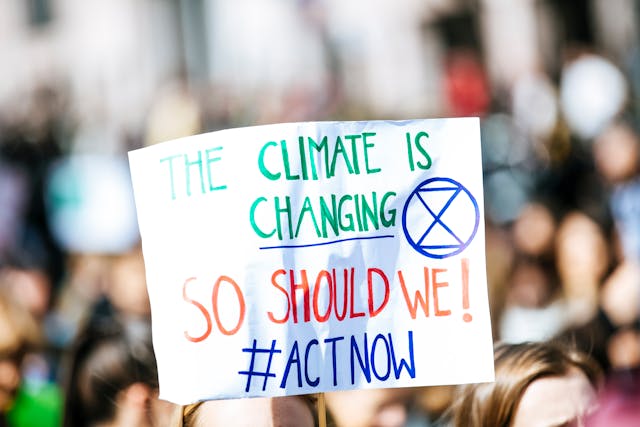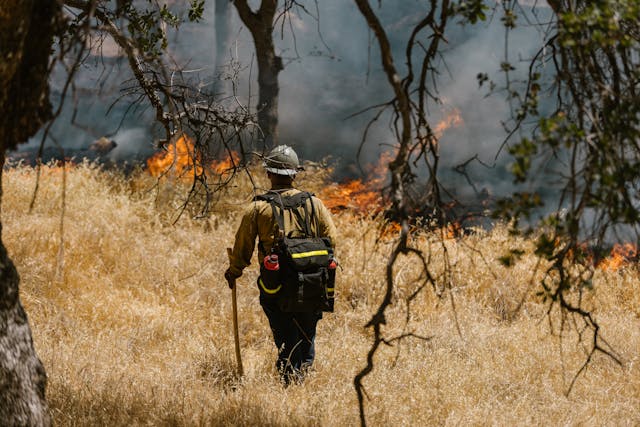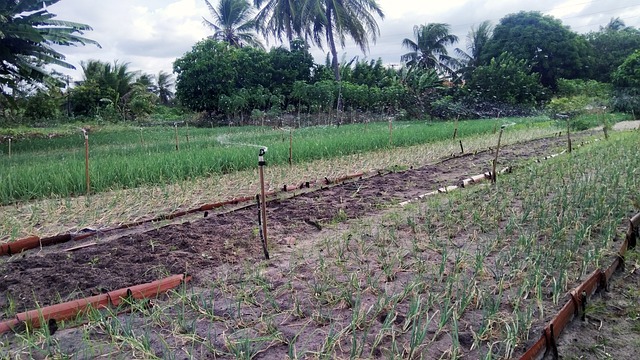
Climate change, once a distant concern, has now become an urgent crisis. The planet is experiencing significant and rapid changes due to increased greenhouse gas emissions, leading to devastating effects on ecosystems, weather patterns, and human health. This article explores the visible impacts of ongoing climate change, outlines potential treatments, and examines the crucial role politics plays in combating this global issue.
Visible Effects of Climate Change
Extreme Weather Events
The frequency and intensity of extreme weather events have surged in recent years. Hurricanes have become more powerful, wildfires more widespread, and floods more devastating. In 2023 alone, the Atlantic hurricane season saw a record number of named storms, with Hurricane Ian causing unprecedented damage across Florida and the southeastern United States. Similarly, Australia faced one of its worst wildfire seasons, with fires burning over 46 million acres and causing extensive loss of life and property.

Melting Polar Ice and Rising Sea Levels
Polar ice melt and rising sea levels are among the most alarming indicators of climate change. According to NASA, the Greenland and Antarctic ice sheets have been losing an average of 279 billion tons of ice per year since 2002. This ice melt contributes to rising sea levels, which are currently increasing at a rate of about 3.3 millimeters per year. Coastal regions, from Miami to Bangladesh, are experiencing more frequent flooding, threatening homes, infrastructure, and livelihoods.
Biodiversity Loss
Climate change is accelerating biodiversity loss at an unprecedented rate. The Intergovernmental Science-Policy Platform on Biodiversity and Ecosystem Services (IPBES) reports that one million species are at risk of extinction due to habitat loss, climate change, and other human activities. The decline of species disrupts ecosystems, which in turn affects food security, water supply, and overall ecological balance, posing direct threats to human communities.
Health Impacts
Rising temperatures and changing weather patterns are having severe health impacts. Heatwaves have become more common and intense, leading to increased incidents of heat-related illnesses and deaths. Additionally, changing climates are expanding the habitats of disease vectors like mosquitoes, leading to the spread of diseases such as malaria, dengue fever, and Zika virus. According to the World Health Organization (WHO), climate change is expected to cause approximately 250,000 additional deaths per year between 2030 and 2050.

Europe’s 2003 Heatwave
The summer of 2003 saw a devastating heatwave in Europe, resulting in over 70,000 excess deaths across the continent. Countries like France, Italy, and Spain were particularly affected, with record-high temperatures leading to heat strokes, dehydration, and other heat-related conditions, especially among the elderly and vulnerable populations.
India’s Recent Heatwaves
India has experienced increasingly severe heatwaves in recent years. For example, the 2015 heatwave resulted in more than 2,500 deaths, making it one of the deadliest in the country’s history. Extreme temperatures, often exceeding 45°C (113°F), strained health systems and highlighted the urgent need for climate adaptation measures.
Spread of Infectious Diseases

Malaria in Africa
Climate change has expanded the habitat range for mosquitoes, the primary vectors for malaria. Warmer temperatures and altered precipitation patterns have facilitated the spread of malaria to higher altitudes in East African highlands, areas that were previously malaria-free. This has put additional pressure on health systems and increased the burden of disease in these regions.
Dengue Fever in Latin America
Dengue fever, transmitted by Aedes mosquitoes, has seen a significant increase in cases due to changing climate conditions. For instance, in 2019, Latin America reported over 3 million cases of dengue, with Brazil accounting for more than 2 million cases. Warmer temperatures and increased rainfall create ideal breeding conditions for mosquitoes, leading to higher transmission rates.
Respiratory Problems

California Wildfires
The increasing frequency and intensity of wildfires in California have led to severe air quality issues. The 2020 wildfire season was one of the worst on record, with smoke causing widespread respiratory problems. The fires released significant amounts of particulate matter (PM2.5) into the air, exacerbating conditions such as asthma and chronic obstructive pulmonary disease (COPD). Studies estimate that wildfire smoke contributed to hundreds of additional deaths and thousands of hospital visits for respiratory and cardiovascular issues.
Mental Health Impacts
Displacement from Extreme Weather Events
Extreme weather events such as hurricanes, floods, and wildfires not only cause physical harm but also lead to significant mental health impacts. The devastation caused by Hurricane Katrina in 2005 displaced hundreds of thousands of people, leading to widespread post-traumatic stress disorder (PTSD), depression, and anxiety. The prolonged recovery process and the loss of homes and livelihoods have long-term psychological effects on affected communities.

Farmers’ Suicides in India
Climate change-induced droughts and unpredictable weather patterns have severely impacted agriculture in India. Crop failures and financial instability have led to a tragic rise in farmers’ suicides. According to the National Crime Records Bureau, more than 10,000 farmers and agricultural laborers committed suicide in 2019, with climate change being a significant contributing factor to their economic distress.
These examples illustrate the diverse and far-reaching health impacts of climate change, emphasizing the need for comprehensive adaptation and mitigation strategies to protect public health.
Treatments and Mitigation Strategies
Renewable Energy Sources
Transitioning to renewable energy sources is critical in reducing greenhouse gas emissions. Solar and wind energy have seen significant advancements and cost reductions, making them viable alternatives to fossil fuels. For instance, Denmark now generates over 50% of its electricity from wind power. Globally, renewables provided an estimated 29% of electricity generation in 2022, showcasing their potential to significantly cut emissions.
Carbon Capture and Storage (CCS)
Carbon Capture and Storage (CCS) technology captures carbon dioxide emissions from industrial processes and stores them underground. This technology can play a vital role in mitigating climate change by reducing the amount of CO2 released into the atmosphere. Projects like Norway’s Sleipner CO2 Storage, which has successfully stored millions of tons of CO2 since 1996, demonstrate the potential of CCS.

Reforestation and Conservation Efforts
Reforestation and conservation efforts are essential in sequestering carbon and preserving biodiversity. Trees absorb CO2, making forests critical carbon sinks. Initiatives like the Great Green Wall in Africa aim to restore 100 million hectares of degraded land, sequester 250 million tons of CO2, and create 10 million jobs by 2030. Such efforts not only combat climate change but also support local economies and ecosystems.
Sustainable Agriculture
Sustainable agriculture practices reduce emissions and enhance carbon sequestration in soils. Techniques such as no-till farming, cover cropping, and agroforestry improve soil health and increase its capacity to store carbon. The Rodale Institute’s Farming Systems Trial shows that organic farming practices can sequester up to 1,000 pounds of carbon per acre annually, demonstrating a practical approach to mitigating climate change.
Role of Politics in Combating Climate Change
International Agreements and Policies
International agreements like the Paris Agreement are crucial in uniting countries to combat climate change. The Paris Agreement aims to limit global warming to well below 2°C, preferably to 1.5°C, compared to pre-industrial levels. Despite challenges, countries have made commitments to reduce emissions, with the European Union pledging to achieve net-zero emissions by 2050.
National Policies and Legislation
Effective national policies are essential for achieving climate goals. Countries like Sweden and New Zealand have implemented carbon pricing mechanisms to incentivize emission reductions. The United States rejoining the Paris Agreement and passing the Inflation Reduction Act of 2022, which includes significant investments in clean energy and infrastructure, marks a substantial step forward in national climate policy.
Local Government and Community Actions
Local governments and communities play a pivotal role in implementing climate solutions. Cities like Copenhagen and San Francisco have set ambitious targets to become carbon-neutral by 2025 and 2040, respectively.
Copenhagen’s ambitious climate plan includes transitioning to 100% renewable energy, improving energy efficiency in buildings, and enhancing public transportation infrastructure. The city has already made significant progress, reducing its carbon emissions by over 50% since 1995. Key initiatives include expanding the city’s extensive cycling network and investing in wind power, with Copenhagen now sourcing over 80% of its electricity from renewable sources.
San Francisco, on the other hand, aims to reach carbon neutrality by 2040 through a combination of measures such as adopting zero-emission vehicles, increasing energy efficiency in buildings, and promoting clean energy technologies. The city has committed to reducing greenhouse gas emissions by 68% below 1990 levels by 2030. Notable projects include the installation of solar panels on public buildings and the implementation of aggressive waste reduction programs, with San Francisco currently diverting 80% of its waste from landfills.
These cities serve as models for urban climate action, demonstrating that local initiatives can drive significant progress towards global climate goals. Their efforts highlight the importance of municipal leadership in the broader fight against climate change, providing valuable lessons for other cities around the world.
Conclusion
The planet’s fever is evident in the increasing severity of climate impacts worldwide. Addressing this crisis requires a multifaceted approach, combining renewable energy adoption, innovative technologies, conservation efforts, and robust political action. It is imperative for individuals, communities, and governments to intensify their efforts to mitigate climate change and ensure a sustainable future. The time to act is now.
- SEO Powered Content & PR Distribution. Get Amplified Today.
- PlatoData.Network Vertical Generative Ai. Empower Yourself. Access Here.
- PlatoAiStream. Web3 Intelligence. Knowledge Amplified. Access Here.
- PlatoESG. Carbon, CleanTech, Energy, Environment, Solar, Waste Management. Access Here.
- PlatoHealth. Biotech and Clinical Trials Intelligence. Access Here.
- Source: https://www.theenvironmentalblog.org/2024/06/climate-change-unveiled-the-urgent-fight-for-our-planet/
